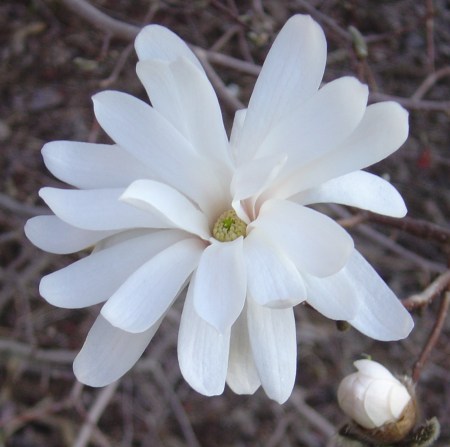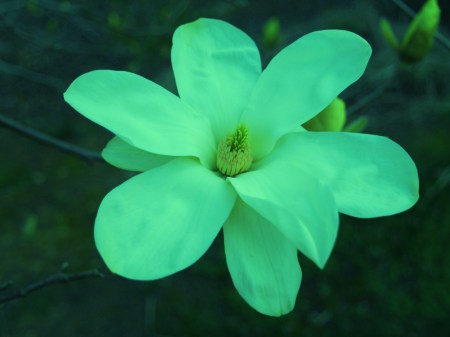A few days ago I was reading a story about Colchicums in the English gardening magazine Gardens Illustrated (my favorite magazine, with superb writing, though the gardens hardly translate to the much warmer and more humid mid Atlantic region of America). The author related that he, like many men, has a tendency to collect. I was struck by this comment. Certainly, in my garden I’m an inveterate collector, but is this an attribute (or curse) of men in general, I wondered? It had not occurred to me that I could be following a genetic impulse rather than a personal inclination, so further investigation was required.
I Googled for the answer. There must be studies to confirm this. Or, perhaps this is a long observed fact, and only I have missed out and it is widely taken for granted. But, I found nothing, not even a mention. Now, it occurs to me that collecting could be confined only to male gardeners, though this again seems a bit too broad. Is it plausible, and how could I have missed it?
You, dear reader, are likely to be reading and shaking your head at my cluelessness. But, I see no reason to apologize, and in fact it seems somehow noble to desire to plant every magnolia or every recognized Japanese maple. Why, you ask? Simply, if the gardener falls madly in love with the early spring flowering ‘Royal Star’ magnolia, is there not a likelihood that he will be similarly smitten by ‘Dr. Merrill’ or the pale yellow ‘Elizabeth’? Of course, yes.
I’ve read that there are at least twenty-five thousand distinct varieties of Japanese maples in cultivation, and though it seems ridiculous to aspire to planting them all (unless one has a garden of substantial size), a minor collection of twenty-five or so seems quite reasonable. With this relatively small number the gardener can experience trees of nearly every color, shape, and size without undo repetition. Why plant a flowering plum or pear when there are infinitely more interesting choices (with the exception of the gardener who finds these extraordinary, and in this case a collection of plums and pears is unquestionably appropriate)?
And, it’s not that the garden is only Japanese maples and magnolias. There are other, smaller collections of dogwoods and redbuds, nandinas, azaleas, mahonias, and more. Also, there are probably a few one-of’s out there. I’ve planted this garden to please only me, and I don’t care much if anyone has to say that it’s only a compilation of collections. If that’s not truly a garden, it’s not a bother to me.

If you’ve followed these pages for long, no doubt you’re aware that much of what I do in the garden displeases my wife (who prefers more open space, and even lawn), so if I can tolerate her barbs not much else is likely to disturb me. If I want to plant one of every cold hardy passionflower vine, or another magnolia (or five), that’s what I’ll do, and it’s no matter that this is more evidence to substantiate the generalization that men are collectors. Perhaps it’s a fact, and if so, good for us.
I listen to the Garden Rebel syndicated nationwide radio show on weekends and he always talks about his citrus tree collection of rare/unusual varieties. Being a landscape professional with a very large piece of property gives him plenty of room to plant trees he’s purchased from all over the world.
Obviously I’m not male, but I’m on my way to amassing cacti and aloes and like you feel no need to apologize! 😉
Go for it, I say!
I loved your post on collections and agree wholeheartedly. If one loves an individual plant or tree or shrub variations are ways to re-experience that delight a second time (or third or fourth). I am afflicted with peonies and hydrangeas and as a relatively junior garden and yard owner would love to fill it with every variety. I did have a question for you though — I also have a specific affinity for passion flowers. Wild and exotic looking — they are marvelous. But here I’m limited — I just adore the purple-blue variety…such as the one pictured in this post. I had a set of two I purchased at a farmer’s market in West Virginia two years ago and the seller said they were cold hardy. I kept them in pots and they failed to make it through to the following summer. So my question to you is, any advice on spots to plant these gorgeous vines and how to support them through our mid-Atlantic winters? Were my pots part of the problem or should I be more careful about the variety I purchase to make sure it truly is winter hardy?
Plants that are planted in pots are likely to be subjected to colder root temperatures, so this will often cause problems. It’s hard to say whether the cold killed the vines, but the foliage and stems die to the ground each year and emerge late in the spring. A few years ago mine didn’t pop up until July, as I recall, so it’s possible that it didn’t die at all. Many of the passion flower vines that I see are tropicals that are not cold hardy, so it is best to purchase plants that are identified by their scientific name.
When planted in the ground passion flower vines require no special treatment or care. They prefer sun, and an established vine will need something to climb on. One of mine grow along wires on a gazebo-like structure, but two other vines ramble through neighboring shrubs. I like to do this with clematis and other vines that are not overly aggressive.